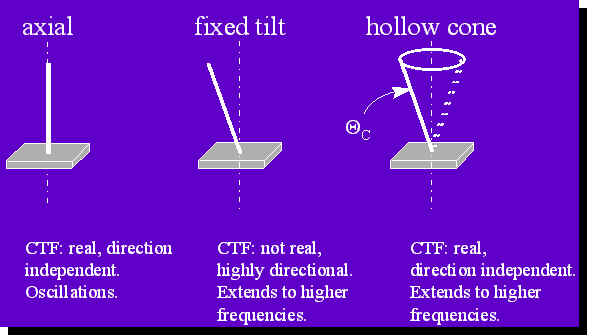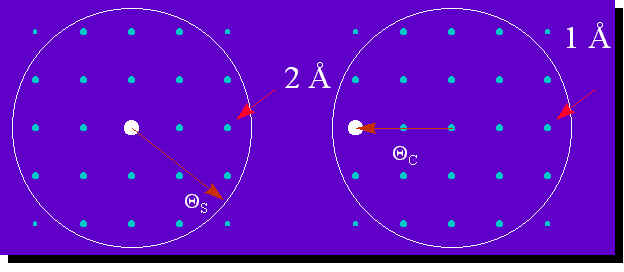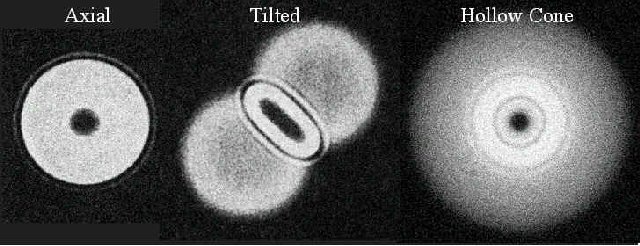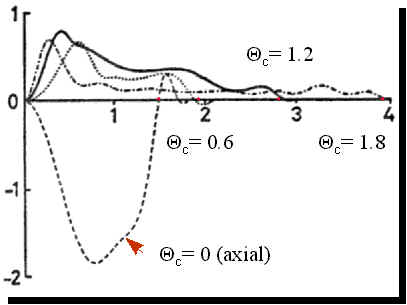
 For axial illumination (above, left) the
incident beam is in the center (in reciprocal space) and directly interpretable
information transferred through the microscope is limited either by the objective aperture
or by point-to-pint resolution of the microscope (if no objective aperture is used). In
the case shown above, information up to 2 gets transferred.
Now, if one tilts the beam as shown above (right), 1 information gets transferred. In
the case of fixed tilt, this resolution enhancement will be highly directional and, in
fact, in the perpendicular direction one would lose resolution.
Hollow cone illumination takes care of this directionality as can be seen in the picture
below where 2-dimensional contrast transfer functions corresponding to axial, fixed tilt,
and hollow cone are shown.


|